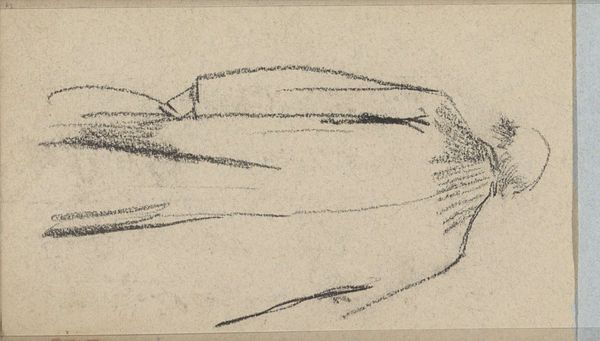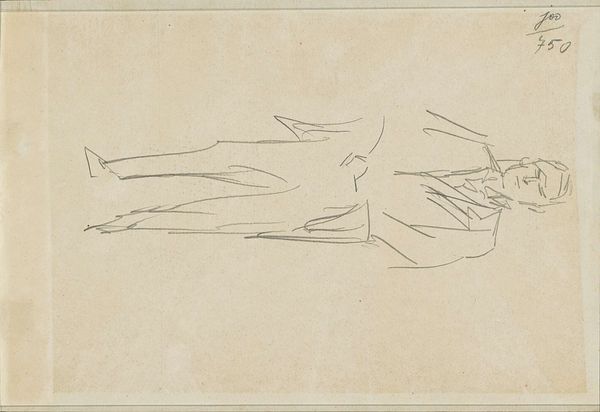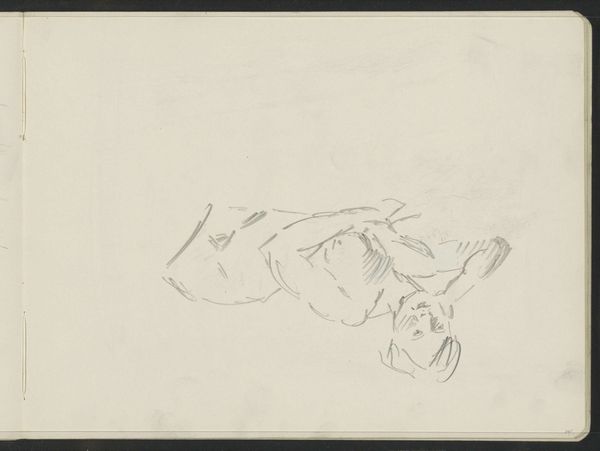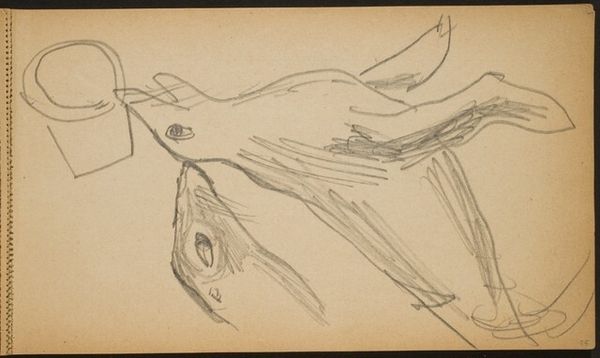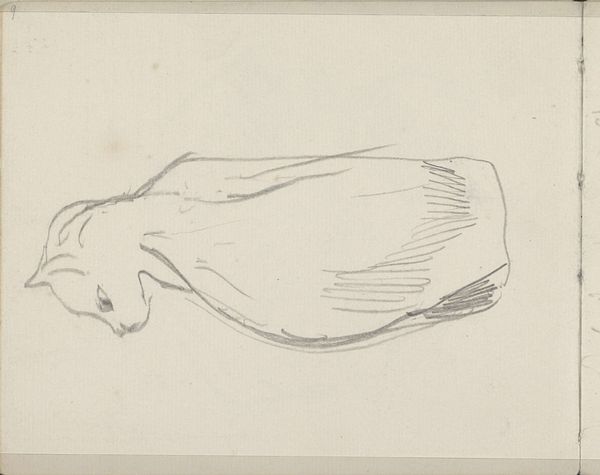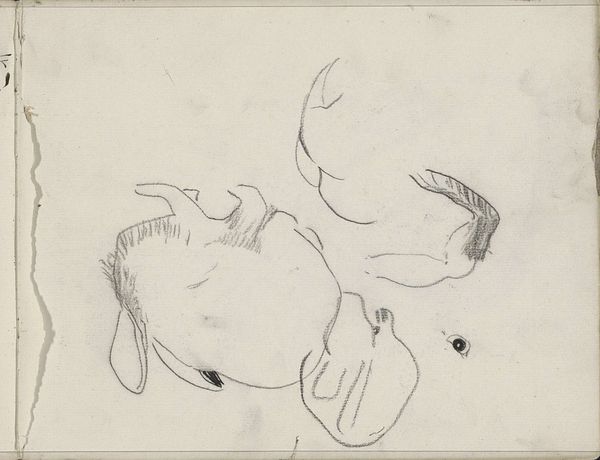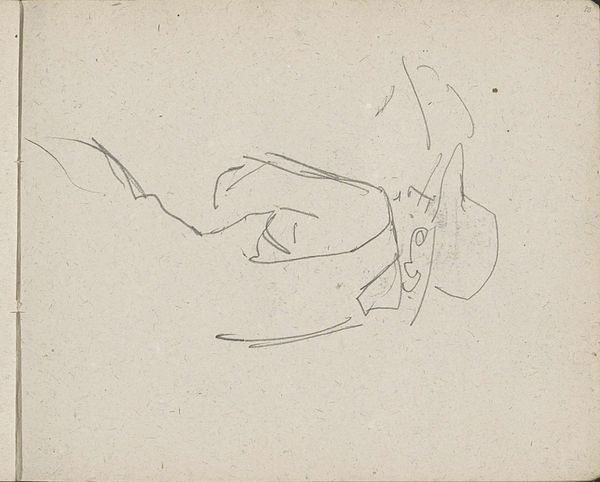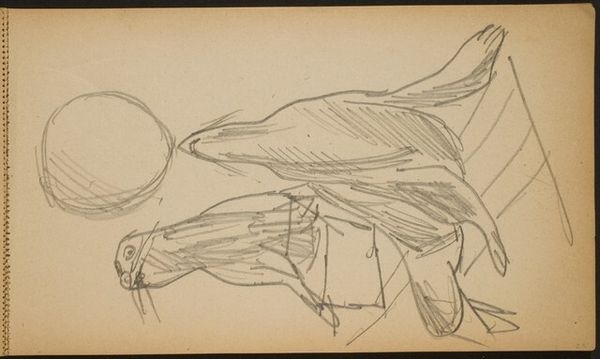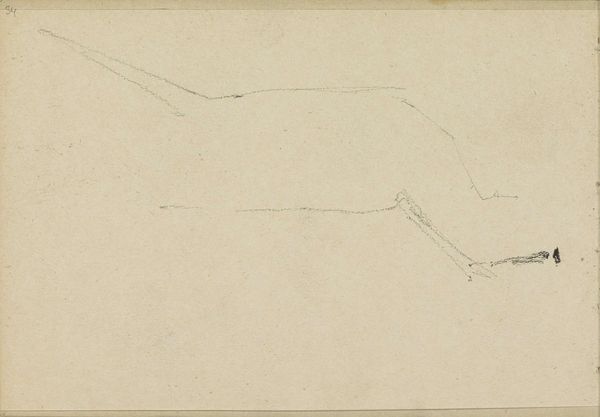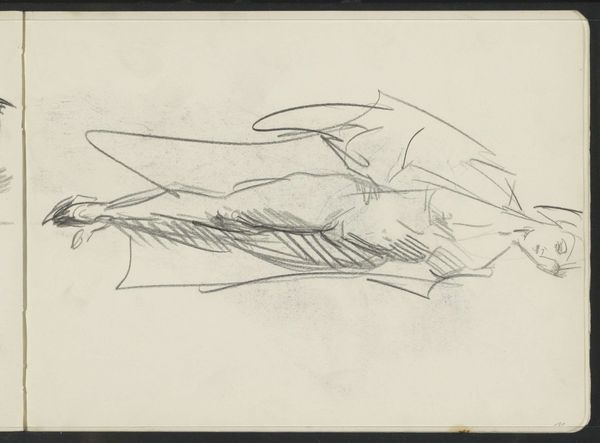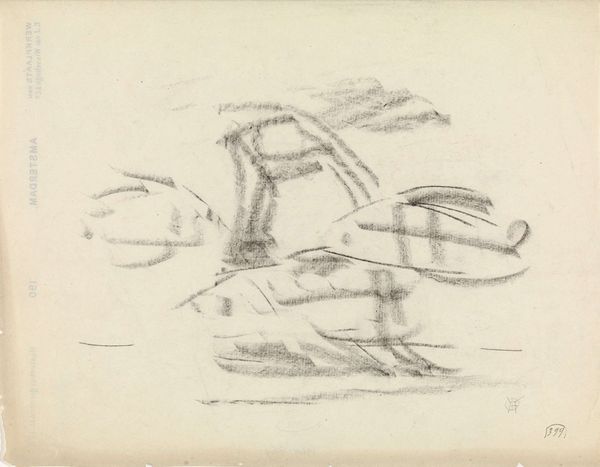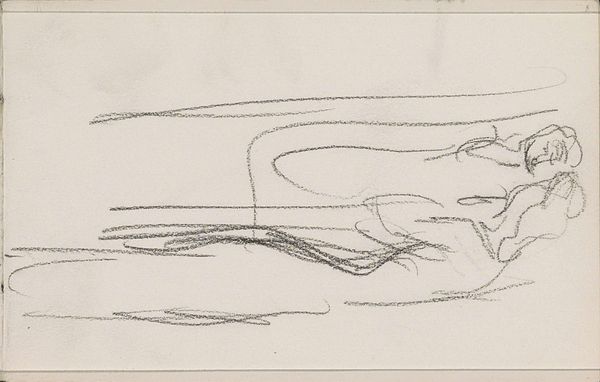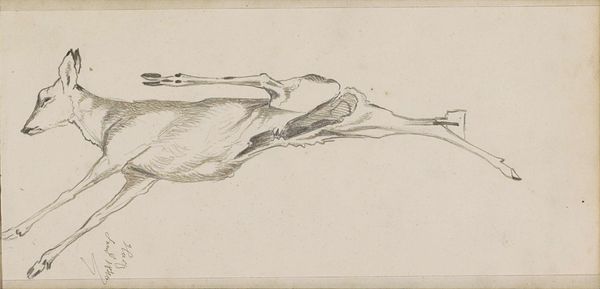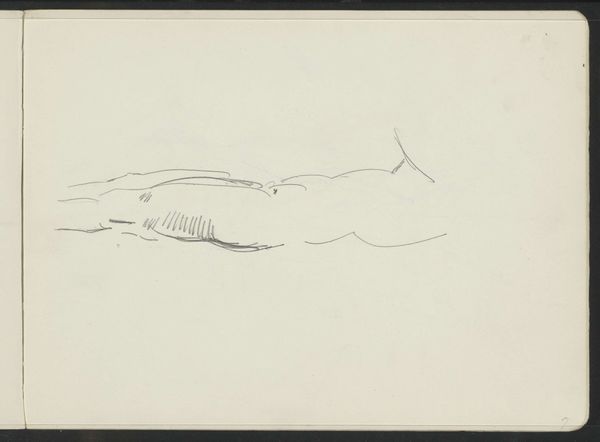
drawing, pencil
#
drawing
#
amateur sketch
#
light pencil work
#
thin stroke sketch
#
pencil sketch
#
incomplete sketchy
#
figuration
#
idea generation sketch
#
ink drawing experimentation
#
pencil
#
rough sketch
#
sketchbook drawing
#
nude
#
initial sketch
Copyright: Rijks Museum: Open Domain
Curator: Here we have a pencil drawing by Isaac Israels, titled "Naakt onderlichaam van een vrouw," or "Naked Lower Body of a Woman," created sometime between 1875 and 1934. It’s currently part of the Rijksmuseum collection. Editor: The immediacy strikes me. There’s an undeniable sense of raw observation. The lines are so sparse, so purely focused on the contours, almost as though he's trying to capture the essence of the form with minimal intervention. Curator: Indeed. The quick, light pencil work points to it being a study, likely done in preparation for a larger piece. Note the materiality—the texture of the paper itself plays a role, offering a subtle ground against which the figure emerges. Editor: That’s fascinating. The visible, thin strokes really showcase a structural approach. It’s as though Israels is investigating the nude's architecture. Is there anything particularly unique about his choice of representing only the lower body? Curator: Perhaps reflecting broader trends in artistic training and the societal context. Anatomical studies, focusing on specific parts of the body, were commonplace in academic settings. We also need to think about access—who had access to models, and the societal implications of depicting the nude. It reflects both a quest for realism and, potentially, the constraints placed upon artistic expression at the time. Editor: So it is in these almost incomplete gestures, we decode not just an artistic process, but the underpinnings of cultural and artistic conventions around representation itself? The composition—the framing of the lower body— invites the viewer to consider that the body exists and takes shape under such complex conventions of how we draw them to begin with? Curator: Precisely. Looking at this from a production perspective helps us question the nature of representation, the labor involved, and how societal norms influence artistic creation. Editor: Examining the artist's structural handling through this minimalist drawing yields more questions than answers about the depiction of the human body and it invites further examination of the societal currents that helped determine how artists approached the nude during that era. Curator: Yes. Thinking about both the tangible materials and broader social influences provides a richer, more nuanced understanding.
Comments
No comments
Be the first to comment and join the conversation on the ultimate creative platform.
